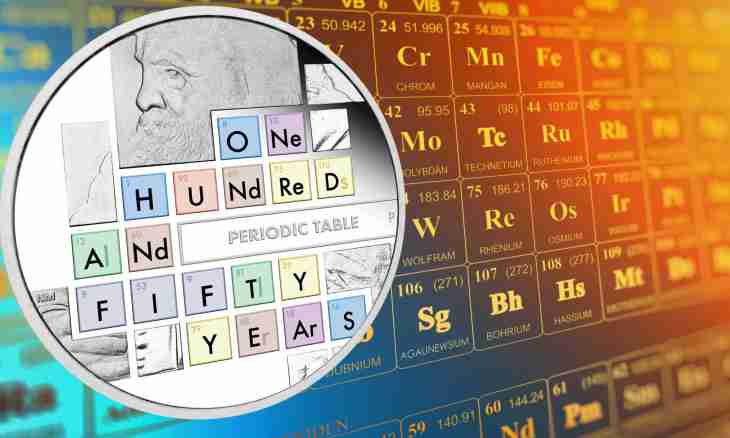The Periodic Table is a unique reference material which needs to be "read" correctly, and then to use the obtained information. In addition D.I. Mendeleyev's table is considered the resolved material on all types of control, including even the Unified State Examination in chemistry.
It is required to you
- Periodic Table of D.I. Mendeleyev
Instruction
1. The periodic system represents multy-storey "house" in which a large number of apartments is located. Each "resident" or chemical element lives in the own apartment at certain number which is to constants. In addition the element has "surname" or the name, for example oxygen, a pine forest or nitrogen. Except these data in each "apartment" or a cage such information as relative atomic mass which can have the exact or rounded values is specified.
2. As in any house, there are "entrances", namely groups here. And in groups the elements are located at the left and on the right, forming subgroups. Depending on that, from their what party it is more, that subgroup is called main. Other subgroup, respectively, will be secondary. Also in the table there are "floors" or the periods. And the periods can be as big (consist of two rows) and small (have only one row).
3. According to the table it is possible to show the structure of atom of an element, each of which has the positively charged kernel consisting of protons and neutrons and also negatively charged electrons rotating around it. The number of protons and electrons coincides in number and is determined in the table by serial number of an element. For example, chemical element sulfur has No. 16, therefore, will have 16 protons and 16 electrons.
4. To define quantity of neutrons (the neutral particles which are also located in a kernel) subtract its serial number from the relative atomic mass of an element. For example, iron has relative atomic mass equal 56 and serial number 26. Therefore, 56 – 26 = 30 protons at iron.
5. Electrons are at different distance from a kernel, forming electronic levels. To define number electronic (or power) levels, it is necessary to look at number of the period in which the element is located. For example, aluminum is in the 3rd period, therefore, it will have 3 levels.
6. (But only for the main subgroup) it is possible to identify the highest valency by number of group. For example, elements of the first group of the main subgroup (lithium, sodium, potassium, etc.) have valency 1. Respectively, elements of the second group (beryllium, magnesium, calcium, etc.) will have valency equal 2.
7. Also according to the table it is possible to analyze properties of elements. From left to right metal properties weaken, and nonmetallic amplify. It is well visible on the example of the 2nd period: alkaline-earth metal magnesium, after it an amphoteric element aluminum, then nonmetals silicon, phosphorus begins alkaline metal sodium, then, the period – chlorine and argon is gray and comes to an end with gaseous substances. In the next period the similar dependence is observed.
8. From top to down also the regularity is observed – metal properties amplify, and nonmetallic weaken. That is, for example, caesium is much more active in comparison with sodium.

